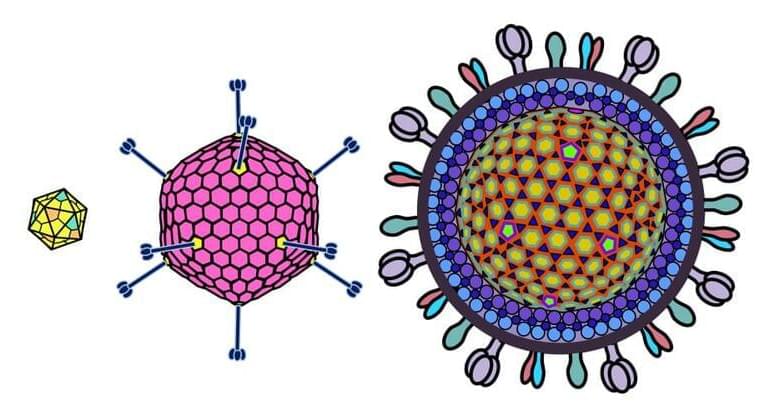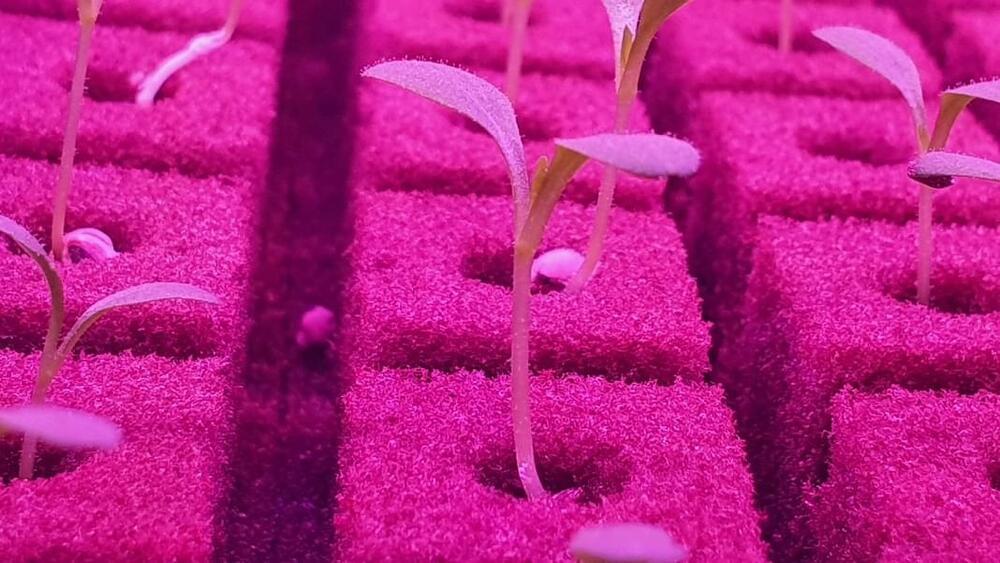A single chemical is key to controlling when hair follicle cells divide, and when they die. This discovery could not only treat baldness, but ultimately speed wound healing because follicles are a source of stem cells.



The Virus Zoo is my latest educational blog post! I’ve written up ~1 page ‘cheat sheets’ on the molecular biology of specific viruses. I cover genome, structure, and life cycle. So far, my zoo includes adeno-associated virus (AAV), adenovirus, and herpes simplex virus 1 (HSV-1). However, I plan to add more viruses as time goes on! Some others I would like to incorporate later are coronavirus, HIV, anellovirus, lentivirus, ebolavirus, and MS2 bacteriophage. Feel free to suggest other interesting viruses in the comments! All images were created by me. #virology #molecularbiology #biotechnology #genetherapy #virus #biochemistry #genetics
Genome and Structure:
AAV genomes are about 4.7 kb in length and are composed of ssDNA. Inverted terminal repeats (ITRs) form hairpin structures at ends of the genome. These ITR structures are important for AAV genomic packaging and replication. Rep genes (encoded via overlapping reading frames) include Rep78, Rep68, Rep52, Rep40.1 These proteins facilitate replication of the viral genome. As a Dependoparvovirus, additional helper functions from adenovirus (or certain other viruses) are needed for AAVs to replicate.
AAV capsids are about 25 nm in diameter. Cap genes include VP1, VP2, VP3 and are transcribed from overlapping reading frames.2 The VP3 protein is the smallest capsid protein. The VP2 protein is the same as VP3 except that it includes an N-terminal extension with a nuclear localization sequence. The VP1 protein is the same as VP2 except that it includes a further N-terminal extension encoding a phospholipase A2 (PLA2) that facilitates endosomal escape during infection. In the AAV capsid, VP1, VP2, and VP3 are present at a ratio of roughly 1:1:10. It should be noted that this ratio is actually the average of a distribution, not a fixed number.

As more drivers adopt plug-in hybrid and electric vehicles, the demand for lithium-ion batteries will continue to explode over the next decade. But processes for extracting lithium can be time-consuming and chemical-intensive, and traditional sources—including brine and hard rock—could ultimately be depleted.
Scientists and engineers are now looking to unconventional water sources, including oil-and gas-produced water, geothermal brines, and rejected brines from seawater desalination. But how much lithium lies within these sources, and how to best extract it, remains an open question.
Asst. Prof. Chong Liu’s team now has the answer. By analyzing more than 122,000 unconventional water sources, she and her team discovered that there is, in fact, enough lithium within these sources to make it worthwhile to extract.

New research from Binghamton University, State University of New York offers a second life for CDs: Turn them into flexible biosensors that are inexpensive and easy to manufacture.
In a paper published this month in Nature Communications, Matthew Brown, Ph.D. ‘22, and Assistant Professor Ahyeon Koh from the Department of Biomedical Engineering show how a gold CD’s thin metallic layer can be separated from the rigid plastic and fashioned into sensors to monitor electrical activity in human hearts and muscles as well as lactate, glucose, pH and oxygen levels. The sensors can communicate with a smartphone via Bluetooth.
The fabrication is completed in 20 to 30 minutes without releasing toxic chemicals or needing expensive equipment, and it costs about $1.50 per device. According to the paper, “this sustainable approach for upcycling electronic waste provides an advantageous research-based waste stream that does not require cutting-edge microfabrication facilities, expensive materials or high-caliber engineering skills.”
Circa 2016
Penn State scientists made a coating that allows conventional textiles used in everyday clothing to patch themselves up. Derived from squid ring teeth, the coating can turn virtually any fabric into a self-healing one. Simply adding water is enough to kick start the repairing process.
Nano research has already revealed the potential of self-cleaning clothes, and now a new study reveals the potential for similar technology in suits that can be used to protect soldiers from chemical or biological attacks.

Are we alone?
We are two scientists who study exoplanets and astrobiology. Thanks in large part to next-generation telescopes like Webb, researchers like us will soon be able to measure the chemical makeup of atmospheres of planets around other stars. The hope is that one or more of these planets will have a chemical signature of life.
Life might exist in the Solar System where there is liquid water — like the subsurface aquifers on Mars or in the oceans of Jupiter’s moon Europa. However, searching for life in these places is incredibly difficult, as they are hard to reach, and detecting life would require sending a probe to return physical samples.
Many astronomers believe there’s a good chance that life exists on planets orbiting other stars, and it’s possible that’s where life will first be found.

At the time climate change was only beginning to be talked about in the scientific community as well as behind the scenes among researchers working for fossil fuel companies.
Climate change fit the EPA’s mandate. And unlike an oil or chemical spill, no reputable scientist would see climate change as equivalent to “the crisis of the day.” But this phrase appears in Chief Justice John Roberts’ opinion justifying the decision in West Virginia v. EPA to deny the Agency its power to regulate carbon emissions from coal-fired power plants which based on the mandated powers described above is its purview (see points 3, 4, and 5).

A team of researchers from Lawrence Livermore National Laboratory (LLNL) and the University of Michigan has found that the rate of cooling in reactions dramatically affects the type of uranium molecules that form.
The team’s experimental work, conducted over about a year and a half starting in October 2020, attempts to help understand what uranium compounds might form in the environment after a nuclear event. It has recently been detailed in Scientific Reports.
“One of our most important findings was learning that the rate of cooling affects the behavior of uranium,” said Mark Burton, the paper’s lead author and a chemist in the Lab’s Materials Science Division. “The big picture here is that we want to understand uranium chemistry in energetic environments.”

An apparent scooping turned into something much more valuable.
Before starting their weekend, Rosie Somerville and Marina Pérez-Jiménez decided to quickly check the latest literature. A few minutes later, the lab WhatsApp group was on fire. After months of arduous work on different organometallic complexes, some of them had just been published. What now?
Very often, researchers across the world work on similar developments without knowing about each other’s results. The latest recipients of the Nobel prize for chemistry, Benjamin List and Dave MacMillan, independently developed organocatalysis. But sometimes the science hall of fame works on a first-come, first-served basis. What if someone scoops the discovery?

The Dubai facility has the capacity to produce over two million pounds of leafy greens annually, and will grow lettuces, arugula, mixed salad greens, and spinach.
ECO stands for Emirates Crop One; the vertical farm is a joint venture between Crop One Holdings (a Massachusetts-based vertical farming company) and Emirates Flight Catering (the catering business that serves Emirates Airlines). Greens from the vertical farm will be served onboard Emirates flights, and will also be sold in grocery stores in the UAE. Since they’re grown in a sterile environment without pesticides, herbicides, or chemicals, the greens come ready-to-eat and don’t need to be washed.
The UAE is in many ways an ideal location for vertical farming, if not a place where the technology may soon become essential. It gets an abundance of sunlight but doesn’t have much water to speak of (it was, fittingly, the field testing site for a nanoparticle technology that helps sandy soil retain water and nutrients); that means vertical farms could use energy from solar panels to grow food indoors using 95 percent less water than traditional agriculture.